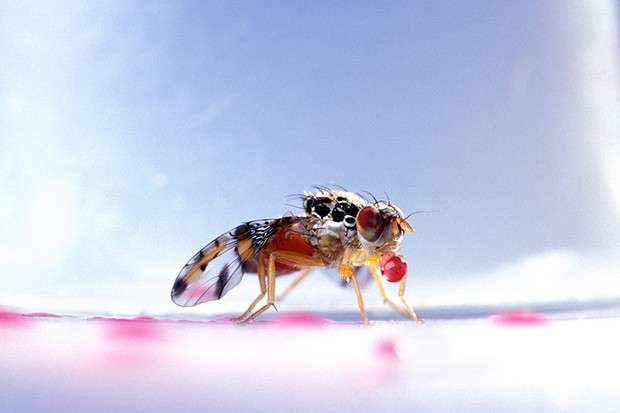Revealed: The biochemical pathways of kidney disease

According to PKD International, 12.5 million people are affected by polycystic kidney disease. There is no known cure. But that may one day change, thanks in part to new research by a Concordia biology researcher.
In a study, recently published in PLOS Genetics, Chiara Gamberi and her coauthors developed an innovative fruit fly-based model of the types of harmful cysts that can form on kidneys. The model has enormous potential for assisting the study of how cells proliferate in polycystic kidney disease and cancer.
But what do fruit flies have to do with it?
"The human and fly genomes show a surprising level of similarity. In fact, gene relationships, or genetic pathways, are virtually identical between human beings and fruit flies," explains Gamberi, who is affiliate assistant professor of biology in Concordia's Faculty of Arts and Science.
"Most human organs have fly counterparts. That's a great advantage we can leverage to study the functions of disease-associated genes, and also to identify possible methods of combatting those diseases."
Kidneys are particularly challenging to investigate because of the difficulties of isolating the nephrons—tiny tubes in the kidney that filter substances from body fluids. The fruit fly equivalent, small though it is, acts as an effective stand-in, with the added advantage of allowing researchers to rapidly assess genetic and chemical influences because of the fruit fly's short lifespan.
Gamberi and her coauthors reported the first example of renal cysts in the fruit fly species Drosophila melanogaster.
Through an interdisciplinary approach that included genetic analyses, molecular biology, micro-dissection and drug screening, they have begun deciphering the biochemical pathways through which kidney cysts form. They have also established screening methods to identify drug candidates. The results will help medical professionals identify new treatment targets and methods for certain kidney diseases and cancers.
"Our findings both validate and prompt further use of this first-in-kind fly model of kidney cyst formation in order to pinpoint the molecular and cellular mechanisms at work," says Gamberi.
"I hope that our studies will help define the precise cellular and molecular defects underlying kidney cyst formation," she adds.
"This will also give greater insight into diseases like cancer, in which certain types of cells proliferate. Ultimately, this will help to select targets and drugs for therapeutic interventions aimed at reducing cyst formation and restoring nephron function."
More information: Chiara Gamberi et al. Bicaudal C mutation causes myc and TOR pathway up-regulation and polycystic kidney disease-like phenotypes in Drosophila, PLOS Genetics (2017). DOI: 10.1371/journal.pgen.1006694

















